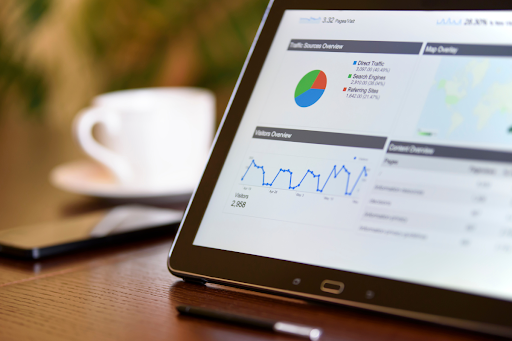In the ever-evolving world of online advertising, the way you present your product or service can make a significant difference. Google Ads, being one of the most powerful platforms for digital advertising, demands a strategic approach when it comes to crafting your ads. In this article, we’ll take a closer look at how to focus on features versus benefits and when to best use each one when targeting an Australian audience.
What’s the Difference Between Benefits and Features in Advertising?
At its core, a feature is a factual statement about the product or service – it’s what the product is or has. For instance, a smartphone with a 108MP camera is a feature. On the other hand, a benefit answers the consumer’s implicit question, “What’s in it for me?” It translates features into personal value. In the same example, the benefit could be, “Capture your memories in stunning detail.”
Why is Focusing on Benefits Crucial for Google Ads?
Focusing on benefits is crucial in Google Ads because it directly addresses the user’s needs or problems. It’s about showing them how their life can be better with your product or service. Benefits tend to be more emotionally compelling and can lead to higher click-through rates and conversions. A benefit-centric ad connects on a deeper level, potentially leading to more meaningful engagements.
Examples of Effective Benefit-Centric Google Ads
An effective benefit-centric Google Ad might showcase a vacuum cleaner, not by listing its “5 HP motor” (feature), but by stating, “Enjoy a cleaner home with half the effort” (benefit). This directly appeals to the desire for a clean home with minimal effort.
It’s important to keep in mind, however, that while benefits are crucial, features still play a role in reinforcing them. The key is balance. Present the benefit, then support it with a feature. For instance, an ad for an electric car might read, “Travel farther on a single charge – up to 500 km with our advanced battery technology.”
Does it Matter if I Have a Product or Service as to Whether I Use Benefits or Features?
Certain products or services, especially those that are highly technical or innovative, might require a greater emphasis on features. However, even in these cases, it’s important to link these features back to user benefits. For instance, a cutting-edge tech gadget might need to highlight its unique features, but framing these in terms of user experience is key.
Let’s look at an example for a hypothetical smartwatch. Its target audience is tech-savvy and they want a device that goes beyond the basics. Here’s how such an ad might look:
Feature-Focused Ad:
“Introducing the X-Tech Smartwatch: Equipped with a 1.8 GHz quad-core processor, 1.5GB RAM, and 16GB internal storage. Features a 1.3-inch AMOLED display with a 360 x 360 resolution, Gorilla Glass 6, and IP68 water resistance.”
While this ad lists impressive technical specifications, it’s heavy on jargon and doesn’t immediately convey how these features translate into tangible benefits for the user.
Balancing Features with Benefits:
“Experience the future on your wrist with the X-Tech Smartwatch. Its powerful 1.8 GHz quad-core processor means lightning-fast responses to your commands, ensuring you’re not left waiting. With 1.5GB RAM and 16GB storage, seamlessly switch between apps and store all your favourite music and apps right on your wrist. The stunning 1.3-inch AMOLED display brings your watch to life in vivid colour, protected by the toughest Gorilla Glass 6 for peace of mind during your outdoor adventures. Plus, with IP68 water resistance, take your smartwatch swimming or jogging in the rain without a worry.”
In this revised version, each technical feature is directly linked to a user benefit:
- The processor’s speed translates into quick responses.
- RAM and storage capacity means seamless multitasking and ample space for personal content.
- The AMOLED display and Gorilla Glass offer a vivid viewing experience and durability.
- IP68 water resistance allows for versatile use in various environments.
By framing the technical aspects in terms of user experience, the ad becomes more relatable and persuasive, illustrating how the smartwatch can enhance the user’s lifestyle and activities.

Identifying Persuasive Benefits for the Target Audience
Identifying persuasive benefits for your target audience, particularly an audience as diverse as Australia’s, requires a deep understanding of their unique needs, preferences, and cultural nuances. Here’s a detailed breakdown of how you can identify these benefits:
Understand Your Audience
Start with basic demographics such as age, gender, income, education, and location. For instance, the benefits that resonate with a young professional in Sydney might differ from those appealing to a retiree in Perth.
Next, add in psychographic analysis – dive into their lifestyle, values, attitudes, and interests. What are their hobbies, aspirations, or challenges? For example, an environmentally conscious consumer in Melbourne might value sustainability as a key benefit.
Analyse Customer Feedback
Review customer feedback, comments, and reviews. What do they praise or complain about? For instance, if many customers highlight convenience, this could be a key benefit to emphasise in your Google Ads.
Competitive Analysis
Study your competitors’ ads and customer responses. What benefits are they highlighting, and how are consumers reacting? This can reveal gaps or opportunities in the market.
Leverage social listening tools to monitor conversations about your brand, industry, or related topics. This can provide real-time insights into what benefits are currently important to your audience.
Behavioural Analysis
Use tools like Google Analytics to understand how users interact with your website or online content. Which pages or products are they most interested in? This data can indicate which benefits are most compelling.
Test and Iterate
Once you’ve identified potential benefits, test them. Use A/B testing in your Google Ads to see which benefits resonate more with your audience. For example, test an ad emphasising “time-saving” against one highlighting “cost-effectiveness” and analyse the performance.
Personalisation
In a diverse market like Australia, personalisation can be key. Tailor benefits in your ads to different segments of your audience. For instance, target ads highlighting “family-friendly” benefits to parents, while emphasising “adventure and exploration” to younger, single individuals.
The Role of A/B Testing
A/B testing plays an instrumental role in deciphering the impact of features versus benefits in Google Ads. By creating two versions of an ad—one focusing on the features of a product or service and the other emphasising the benefits—you can deploy these concurrently to a segmented audience. This methodical comparison allows you to gather data-driven insights into which approach resonates more with the target audience, based on measurable outcomes such as click-through rates, conversion rates, or overall engagement.
The results of A/B testing can unveil whether the audience is more compelled by the technical aspects and capabilities of a product (features) or by how the product can enhance their lives or solve their problems (benefits).

The Importance of Copywriting in Communicating Benefits
Copywriting, especially when distinguishing between features and benefits, is vital. It transforms the cold, often technical and unfeeling features of a product into warm, relatable benefits that resonate with your target audience. Copywriters don’t just tell the audience what a product does – they weave a story that shows what the product can specifically do for them – how it can ease their problems, improve their lives or otherwise help them reach their goals.
Enhancing Benefits Through Visual Elements
Enhancing benefits through visual elements in advertising is akin to adding colour to a canvas—it brings the message to life, making it more compelling and memorable. Visuals act as a powerful complement to written copy, providing an immediate, visceral impact that words alone may not always achieve. For instance, an image of a person enjoying a serene landscape can instantly convey the benefit of a travel package, evoking feelings of relaxation and escapism even before the viewer reads a single word. Visuals can also simplify complex benefits; a graph showing the rapid results of a new fitness program, for instance, makes the benefit immediately apparent and easily digestible.
Visuals can also create an emotional resonance, forging a stronger connection between the product and the consumer. For example, a picture of a family laughing together in a safe, cosy home can powerfully communicate the benefits of a home security system far more effectively than a list of technical features. In the digital age, where attention spans are short, the role of visuals becomes even more crucial. Animated videos or infographics can succinctly convey benefits that might require paragraphs of text to explain. Visual metaphors and symbols can also be employed to subtly reinforce the benefits, like using a lightbulb to represent innovation or a shield for protection.
What are the Long-Term Effects of Focusing on Benefits?
Focusing on benefits in advertising has profound long-term impacts, shaping not just immediate consumer behaviour but also building lasting brand relationships. By emphasising how products or services enrich lives, solve problems, or fulfil desires, brands position themselves as allies in their customers’ journeys, fostering loyalty and trust. This benefit-centric approach cultivates a deeper emotional connection, encouraging repeat business and positive word-of-mouth. Over time, it contributes to a strong, positive brand image, where the brand is associated not just with certain products, but with the value and satisfaction those products bring.
Additionally, a consistent focus on benefits can lead to a more engaged and satisfied customer base, as it demonstrates a brand’s commitment to understanding and meeting the real needs and aspirations of its audience. This long-term customer engagement and loyalty are invaluable in an increasingly competitive marketplace, serving as a foundation for sustainable business growth and success.
Your Next Steps Before Launching a Google Ads Campaign in Australia
The strategic shift from a feature-focused approach to one that emphasises benefits in Google Ads can significantly enhance the effectiveness of your advertising campaigns. This pivot towards highlighting how products or services tangibly improve the lives of consumers resonates on a deeper emotional level, fostering stronger connections and driving action. Copywriting, meanwhile, serves as the bridge that translates technical features into relatable, compelling benefits. Adding in visual elements enhances these benefits, creating a more impactful and memorable message.
Long-term, the focus on benefits contributes to building enduring relationships with consumers, establishing trust, and fostering brand loyalty. It’s a strategy that goes beyond immediate conversions, paving the way for sustainable growth and a positive brand image. In the dynamic and competitive landscape of digital advertising, such an approach is not just beneficial; it’s essential. By continuously refining their messaging through methods like A/B testing and keeping a keen eye on the ever-evolving needs and preferences of their audience, advertisers launching Google Ads campaigns in Australia can ensure that their focus on benefits remains relevant, persuasive, and ultimately, successful.
If you want to leverage benefits within your Google Ads campaign, schedule your free, no obligation sales consultation with our Google Ad professionals, and learn more about how to create compelling headlines, call-to-action tips and more on Google’s Display Network and beyond.




